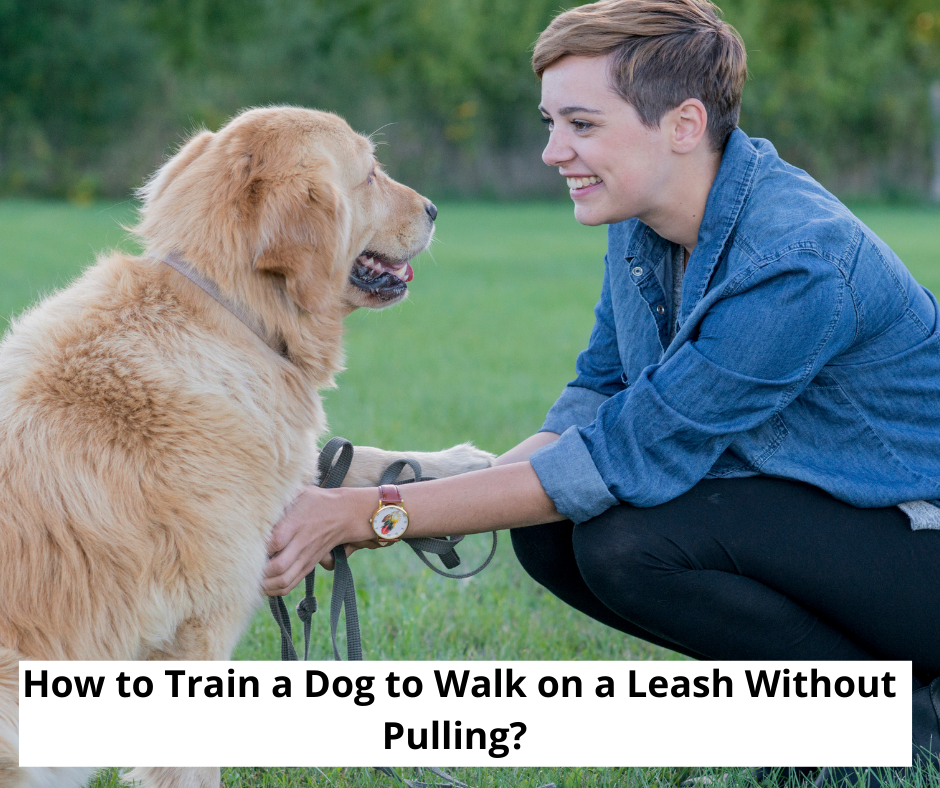
Many people believe that dogs are born knowing how to walk nicely on a leash, but this ability must be taught. It’s an essential skill to teach, and you’ll appreciate it every time you take your dog on a stroll. The dog’s training suggests the following:
How to Teach Your Dog to Walk on a Leash
Introduce the harness or collar and leash to the puppy. Begin by allowing them to get used to wearing a collar or harness and a leash. Allow them to wear them for a brief amount of time around the home while you play with them and give them goodies. Because collar-and-leash time symbolizes food and pleasure, the puppy should like it.
1) Give a class
Introduce your dog to a sound cue that indicates “food is on the way.” Some individuals like clicking and treating. Some individuals use words such as “yes,” while others cluck their tongues. The technique is the same regardless of the approach you use: It produces a sound when the puppy is on a leash and collar in a calm, distraction-free environment. Reward your dog with a goodie the moment he turns toward you and stares at you. After a few repetitions, you’ll find that your puppy is not only gazing at you but approaching you for a reward.
2) Make the pup come to you
Back up a few steps while the pup is on his way to you, still wearing the leash and collar, and then praise him when he arrives. Continue the process until your puppy approaches you and walks a few steps with you when he hears the cue noise. Keep in mind that dogs have a short attention span, so keep your training brief and stop them when your puppy is still ready to do more, rather than when he is mentally tired.
3) Practice inside
Now that your pup knows how to come to you, take a few steps with him in a room with minimal distraction. Feeling and seeing the leash around him will be difficult enough. As your puppy becomes used to coming to you while wearing a leash, reward him with goodies and praise.
4) Take it outside
Finally, you’re ready to put your puppy’s abilities to the test in the great outdoors. This stage will provide new difficulties since all of the noises, scents, and sights your puppy experiences will be fascinating and novel to him. Be patient and take short walks at first. While out on a stroll, if your puppy seems to be ready to rush into something or to get distracted (you’ll notice this since you’ll be keeping your eyes on him in all instances), make your cue sound and take a few steps away. Then give him a treat for following you.
Troubleshooting for Leash-Training
Even if your dog is learning to walk well on a leash, you will undoubtedly face some problems as he grows older, sees new locations, and encounters new diversions. You should train him to walk on a loose leash because it is more comfortable for both of you and will help him pass his Canine Good Citizen exam. Here are some suggestions for what to do if you’re experiencing difficulty with leash training.
1) If your dog pulls
If your dog begins to tug in the other way, transform yourself into “a tree.” Hold your breath and refuse to move until your dog returns to you. Don’t pull or jerk the leash, and don’t drag your dog after you. Alternative instructional tools for pulling dogs include front-hook harnesses and head halters.
2) If your dog lunges
Be proactive if your dog chases anything while out on a walk, such as another dog, a vehicle, or a skateboarder. Before he gets a chance to lunge, try to divert his attention with a reward and increase the distance between your dog and the objective. Stay aware and prepared before the source of his rage comes too near. This kind of behavior is more frequent in herding breeds, although any dog may be shocked by anything new or interesting to him.
3) If your dog barks
While out on a stroll, some dogs tend to bark at other dogs. This conduct is often the consequence of a lack of exercise. Ascertain that your dog receives the appropriate amount of mental and physical activity for his age and breed. If this is still an issue, follow the same steps as if your dog was lunging, as stated above: create space and give rewards before he begins to bark, so that every time he sees a dog, he becomes used to shifting his focus to you.
You’ll gradually decrease the number of rewards and the amount of troubleshooting that your dog requires throughout a walk. Still, it’s a good idea to have them available at all times so that you can reward excellent leash-walking manners at random.
A word of caution about treatment training
For training reasons, be sure to offer low-calorie rewards like frozen veggies, kibble, or other acceptable food. Too many calories in a dog’s diet may lead to serious health problems, which can be easily prevented by carefully managing your dog’s daily food consumption, including treats.
What to Feed a Dog with Kidney Failure Who Will Not Eat?
Begin by rewarding him with a treat whenever he exhibits a desired behavior. Then, as your pet learns each new behavior, gradually reduce the number of rewards provided. If you continue to provide the treat infrequently, he will remain engaged in the game because he knows that he will ultimately get a treat reward if he does the behavior.
